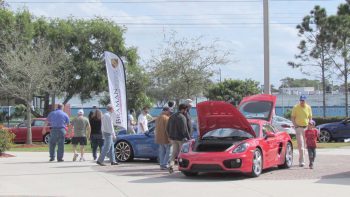By Keiser University Automotive Management Professor Brian Bastin
We have been here before. OK, maybe not quite here, but eerily similar. The President of the United States orders auto manufacturers to start producing key components for the war effort. Demand plummeting for new vehicles as fear of loss proliferated the landscape. We need not take our eye off the human toll before us; however, we can take solace in the fact that we have been here before and have persevered. It’s a perseverance that comes not out of some overt heroic intent, but through adaption to circumstances. An adaption that takes place when we see the presence of silver linings even in the bleakest of situations.
World War II took its toll on car dealer new vehicle sales. Manufacturers were making bombers and tanks, not cars and trucks. For those dealers “lucky” enough to have inventory, sales were still allusive as hundreds of thousands picked up rifles and boots instead of new car keys as they shipped off to battle. Many of those who could buy feared the government may confiscate their vehicles for scrap metal. During the Great Recession of 2008, dealers once again faced a loss of vehicle sales. Sales rates plummeted from over 16 million annual new vehicle sales to a little over 10 million as the roles of the unemployed swelled to levels not seen since the 1930s. Dealers responded in both cases by looking to their service departments, not for the icing on the profit cake but survival.
Today, we stand in the face of our generational crisis. Fortunately, we can look back and walk the path paved by those who came before us. We can learn the lessons of the past by beefing up service operations. An oft-overlooked metric is an absorption. This ratio measures how much of our fixed overhead can be covered by our service and parts gross profit. While this ratio is important anytime today, it is imperative. Dealers achieving 100% absorption don’t have to sell a vehicle to breakeven or can even sell cars at a loss to meet stair-step bonuses or build market share. The economy may go up slower than our leaders suggest when we finally crest and begin to get back to our new normal. Imagine more of a Nike swoosh than a V. Sales may not race off the starting line, but service operations can as there will be a need to maintain the existing fleet of vehicles. Dealers may even be able to find some new technicians from the line of people being laid off in the workforce.
Dealers retain a little over 30% of the total service market potential. Convenience is one of the key reasons. Dealers are aggressively touting pick-up and delivery services for both sales and service during this crisis. They are using the tools of online delivery. Hopefully, this trend will continue once the worst has passed. Powerhouses will be created as dealers merge their traditional strengths with more convenient and customer-focused practices. History is replete with examples of great ideas born out of necessity. Many don’t remember one of the greatest selling tools available to dealers, the F&I menu, was created not to generate more product sales, but to avoid the threat of regulation against dealer F&I departments.
Dark days will be ahead for all citizens of the world. Dealers, like most businesses, need to navigate the thin line between marketing and sensitivity. Look closely though, and you will see the silver linings. New and improved selling strategies, a greater focus on high margin business lines, and dealers giving back to the communities they rely on by organizing blood drives and keeping many people employed. Take a deep breath and give thanks that we can lean on those who have been here before.








 My instructors believed in me. They were more than instructors, they tried to get to know you as a person and tried to understand your goals so they could push you towards them. Student services helped me find a job before I even graduated. Everyone was dedicated to my overall success.
My instructors believed in me. They were more than instructors, they tried to get to know you as a person and tried to understand your goals so they could push you towards them. Student services helped me find a job before I even graduated. Everyone was dedicated to my overall success.
